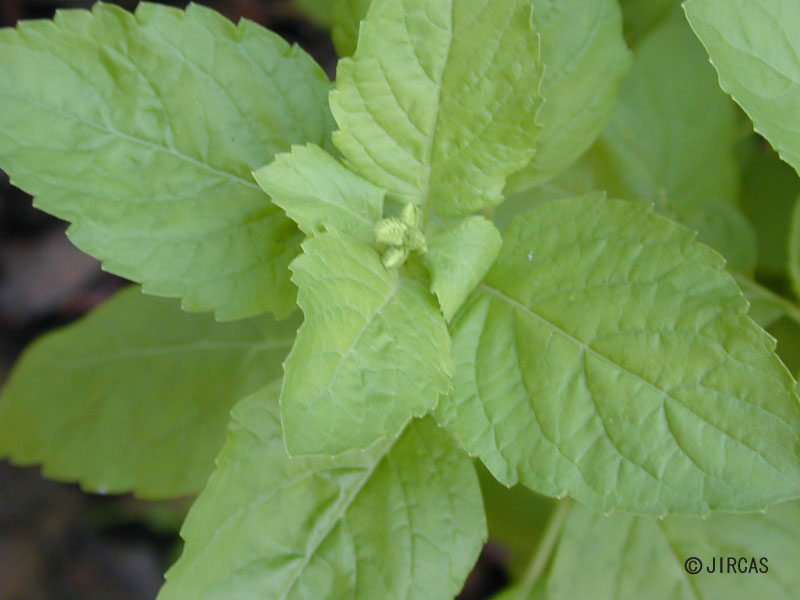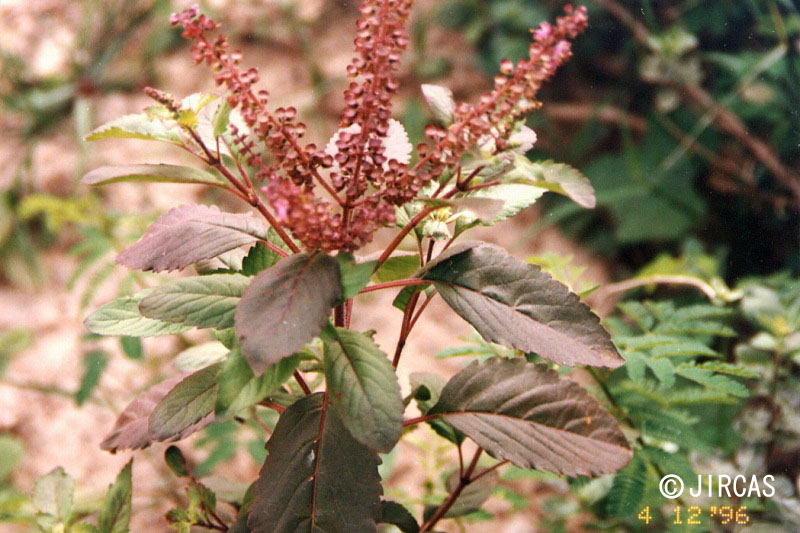Ocimum tenuiflorum L. (Lamiaceae)
- Scientific name
- Ocimum tenuiflorum L. (Syn. O. sanctum Merr.)
- Family name
- Lamiaceae (Syn. Labiatae)
- Common name
- Holy basil, sacred basil (English); kamimeboki (Japanese)
- Local name
- Kaprao
Herbaceous annual or perennial short shrub, 30–40 cm tall. Stem quadrangular, green, or purplish green, covered with soft, short hairs, denser at tip. Leaves simple, opposite, elliptic-oblong or ovate, 1.5–6.0 × 1.0–2.5 cm, obtuse or acute at apex, cuneate to rounded at base, undulate or serrate, pubescent, dotted on both surfaces; petiole long. Inflorescence verticillate, up to 14 cm long, bract ovate or suborbiculate, small. Flowers lavender or white, pedicel short. Calyx 0.2–0.35 cm long, bilabiate; upper labellum suborbicular; lower labellum longer than upper, teeth 4. Corolla 3–5 mm long, bilabiate; upper labellum with 4 short lobes; lower labellum ovate-oblong. Stamens 4, didynamous, exserted far beyond labellum. Fruit a dehiscing capsule. Seeds broadly ellipsoid, small, swelling in water.
Commonly grown in backyard gardens. Prefers full sun and moist soil with high organic-matter content. Easily propagated seed broadcasting on raised beds, with regular watering. Nitrogen fertiliser promotes growth.
Consumed as a spice in various curry dishes, or in khao phat kraprao, a popular fried fast-food dish made with chili, garlic, pork, meat, or chicken served with plain rice.
Consumed as a spice in various curry dishes, or in khao phat kraprao, a popular fried fast-food dish made with chili, garlic, pork, meat, or chicken served with plain rice.





